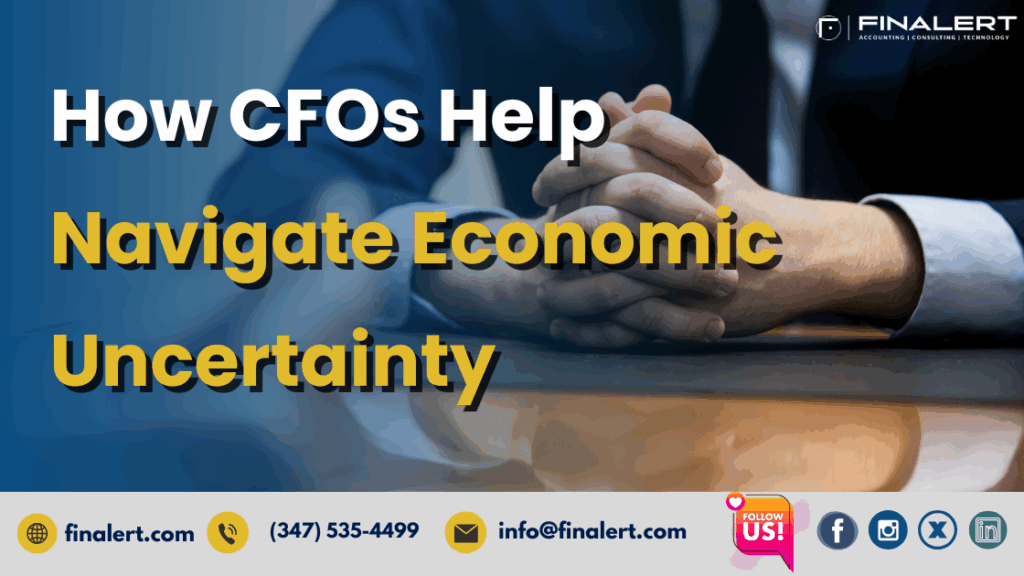
In today’s unpredictable business environment, CFOs play a critical role in helping companies navigate economic uncertainty. From fluctuating interest rates and inflation to supply chain disruptions and shifting consumer demand, financial leaders are tasked with safeguarding profitability while positioning their organizations for growth.
The role of a CFO has evolved dramatically in the past decade. No longer limited to financial reporting, today’s CFO acts as a strategic advisor helping CEOs and boards anticipate market shifts, manage risk, and make data-driven decisions. In 2025, with global economic pressures and rapid technological advancements, CFOs are at the forefront of steering companies through volatility with precision and foresight.
Traditional annual budgets, set in stone months before the fiscal year begins, are becoming less effective. Economic uncertainty demands flexibility. Modern CFOs rely on rolling forecasts, which are updated frequently—often monthly or quarterly—to reflect current realities.
By integrating real-time economic data, CFOs can model different “what-if” scenarios, preparing organizations for best-, worst-, and most-likely-case situations.
A mid-sized manufacturing firm used rolling forecasts to quickly adjust to a sudden spike in steel prices in late 2024. By identifying the impact early, the CFO renegotiated supplier contracts and avoided passing excessive costs onto customers.
Economic downturns can dry up revenue streams faster than expected. Strong cash flow management allows businesses to remain operational, fund essential projects, and seize unexpected opportunities.
CFOs act as the gatekeepers of liquidity, ensuring the business can sustain itself even during prolonged downturns.
Financial risk in 2025 extends far beyond traditional credit or market risks. CFOs must now address cybersecurity, ESG (Environmental, Social, Governance) compliance, regulatory changes, and geopolitical factors.
A SaaS provider faced potential revenue loss due to new data privacy laws in certain states. The CFO worked with legal and IT teams to upgrade compliance protocols in advance, preventing costly fines and maintaining client trust.
While reducing expenses can improve short-term margins, cutting too deeply can harm long-term competitiveness. CFOs must identify strategic cost reductions—removing waste while preserving investments in innovation and customer experience.
A retail chain reduced overhead by automating inventory management, saving $1.2 million annually. The savings were reinvested into e-commerce expansion, leading to a 15% sales increase.
In uncertain times, speed matters. CFOs equipped with real-time analytics can pivot faster than competitors.
A logistics company’s CFO used analytics to detect early signs of declining delivery volumes in one region. By reallocating resources and adjusting pricing, they avoided a 10% decline in revenue.

Economic uncertainty often causes anxiety among investors and stakeholders. CFOs must maintain clear, consistent, and credible communication to preserve trust.
Companies with transparent leadership often enjoy better credit terms, stronger investor relationships, and greater employee morale during downturns.
In times of economic uncertainty, CFOs must be selective about where and when to invest capital.
A technology company paused its overseas expansion during a market downturn but allocated funds to product R&D, enabling it to launch a new offering ahead of competitors when the market recovered.
CFOs create contingency plans for multiple potential futures, allowing organizations to respond rather than react to sudden changes.
By assigning probability and impact scores, CFOs can prioritize actions for each potential outcome.
Economic uncertainty is not a temporary phase—it’s the new reality for modern businesses. CFOs who combine financial expertise, strategic foresight, and real-time adaptability can guide organizations through turbulent times while positioning them for long-term success.
Whether it’s strengthening cash flow, optimizing costs, leveraging analytics, or maintaining investor confidence, the CFO’s role as a navigator of uncertainty has never been more essential. In 2025 and beyond, the most successful companies will be those that treat their CFO not just as a financial leader, but as a strategic partner in resilience and growth.
Similar Articles
No results available
Get in touch with Finalert today for tailored business solutions!
No results available
Ready to thrive? Connect with Finalert today and let’s succeed together in the dynamic global market.
© 2025 Finalert. All rights reserved.
Ready to thrive in the dynamic global market? Finalert LLC offers expert financial services, including accounting, consulting, and technology solutions, tailored to your business needs.
Address
Accounting
Quick Links
Consulting
Industries
© 2025 Finalert LLC. All rights reserved.